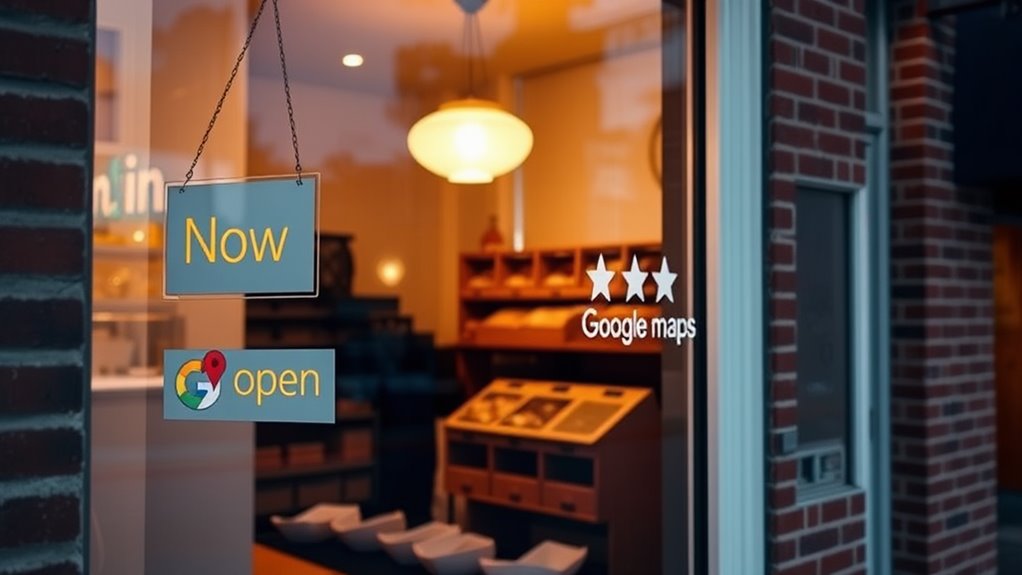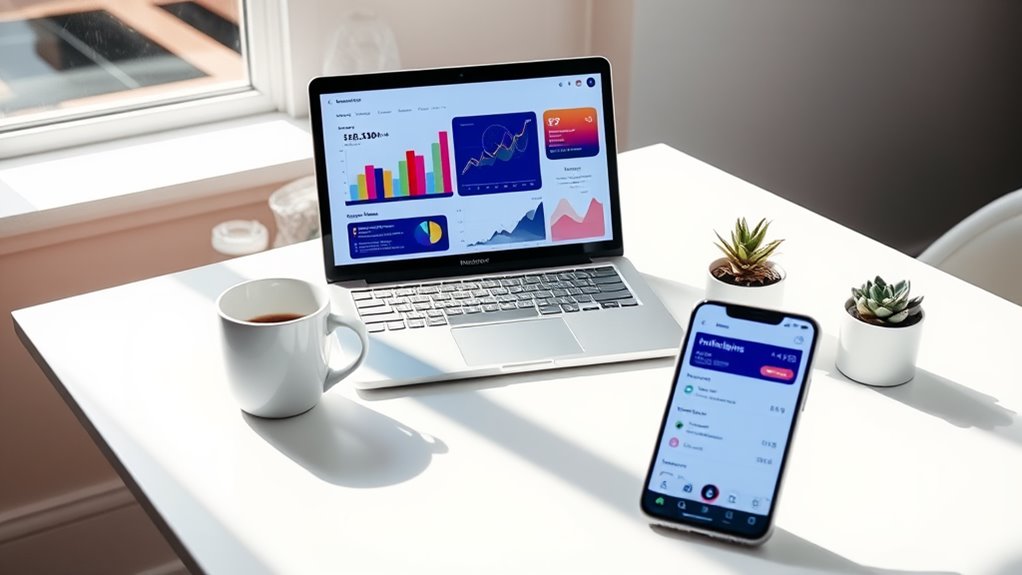Local SEO combines both free and paid strategies, with many powerful optimization techniques available at no cost. You can start by creating and optimizing your Google Business Profile, managing customer reviews, and maintaining consistent business information across online platforms without spending money. While some advanced tools and services require payment, core elements like local keyword research, content creation, and basic citation building are completely free. You'll need to invest time and effort to implement these strategies effectively, but the initial foundation of local SEO doesn't require a financial investment. Understanding these fundamentals will help you determine where to focus your optimization efforts first.
Key Takeaway
- Many core Local SEO tasks like Google Business Profile setup, review management, and basic NAP updates are completely free.
- While some activities are free, quality Local SEO often requires investment in time, tools, or professional expertise.
- Free local directories and citation sites offer basic listings, but premium features and enhanced visibility usually have costs.
- Creating local content and managing social media presence can be done without monetary investment but demands significant time commitment.
- Local SEO is generally more cost-effective than traditional advertising, with many free options available for small businesses.
Free Local SEO Fundamentals
Getting started with local SEO doesn't have to cost anything. You'll find several foundational elements that you can implement immediately without spending a dime, creating a solid base for your local search presence.
Key Free Local SEO Elements:
- Google Business Profile optimization – Update your business hours, categories, and description
- Local keyword research through Google's Autocomplete and "People Also Ask" features
- NAP consistency (Name, Address, Phone) across online platforms
- Customer review management and response strategies
- Local content creation focused on your service area
Implementation Steps:
- Claim and verify your Google Business Profile
- Conduct basic keyword research using Google's free tools
- Create location-specific website content
- Monitor and respond to customer reviews
- Submit your business to free online directories
You'll need to dedicate time to maintain these elements, but the monetary investment remains at zero. Start by focusing on your Google Business Profile, which serves as your digital storefront and influences 46% of all Google searches with local intent. Remember to regularly update your business information and post fresh content to maintain relevance in local search results.
Google Business Profile Setup
Your Google Business Profile represents the cornerstone of local SEO success, and setting it up correctly from the start will maximize your visibility in local search results. To create an optimized profile, you'll need to follow several essential steps that guarantee accuracy and completeness.
Key Setup Elements:
- Verify your business ownership through Google's verification process
- Add your exact business name, address, and phone number (NAP)
- Select the most relevant primary and secondary business categories
- Upload high-quality photos of your business, products, and team
- Write a detailed, keyword-rich business description
Essential Optimization Steps:
- Monitor and respond to customer reviews promptly
- Update your business hours, including special holiday schedules
- Add your products or services with accurate pricing
- Include attributes that highlight unique features (wheelchair accessibility, WiFi, etc.)
- Post regular updates about promotions, events, or news
Remember to maintain consistency across all your business information and regularly check your profile for accuracy. Google rewards active profile management with better visibility, so you'll want to update your content at least monthly and respond to any changes in your business operations immediately.
Cost-Free Local Content Creation

To boost local visibility without spending money, creating high-quality content focused on your area costs nothing but time and effort. You'll need to strategically develop content that resonates with your local audience while incorporating relevant keywords and location-specific information.
Key Content Creation Strategies:
- Write detailed blog posts about local events, news, and community initiatives
- Create neighborhood guides and area-specific resources
- Develop location-based FAQs addressing common customer queries
- Share local success stories and case studies from your business
Content Implementation Tips:
- Include your city, neighborhood, and landmark references naturally
- Structure content with location-specific headings and subheadings
- Incorporate local statistics and data points when available
- Use Google Trends to identify regional search patterns
You can enhance your content's local appeal by:
- Adding location-specific meta descriptions
- Creating separate pages for each service area
- Using local schema markup
- Including embedded Google Maps
Remember to update your content regularly and ascertain it's mobile-friendly, as 64% of local searches occur on mobile devices. You'll want to maintain consistent publishing schedules while monitoring engagement metrics through Google Analytics.
Managing Online Customer Reviews
While creating local content builds your foundation, customer reviews serve as powerful social proof for your business. You'll find that managing online reviews requires consistent attention but doesn't necessarily demand monetary investment.
Key Review Management Strategies:
- Monitor your Google Business Profile, Yelp, and industry-specific platforms daily
- Respond to both positive and negative reviews within 24-48 hours
- Use free email templates to request reviews from satisfied customers
- Set up Google Alerts to track mentions of your business across the web
Best Practices for Review Response:
- Thank reviewers for their feedback, using their name when possible
- Address specific points mentioned in the review
- Keep responses professional and solution-focused
- Take negative conversations offline by providing contact information
While review management platforms like Reputation.com or BirdEye can automate the process, you can effectively manage reviews manually using free tools. Your Google Business Profile offers built-in review management features, and you can create a spreadsheet to track review metrics and response times.
Remember that 87% of consumers read online reviews before visiting local businesses, making this free aspect of local SEO essential for your visibility and reputation.
Local Citation Building Basics

Building local citations forms another essential pillar of free local SEO efforts. Citations are online mentions of your business's name, address, and phone number (NAP) across various websites, directories, and platforms.
Key Citation Building Strategies:
- Start with major directories like Google Business Profile, Yelp, and Yellow Pages
- Maintain consistent NAP information across all platforms
- Focus on industry-specific directories relevant to your business
- Leverage free business listing sites in your local area
You'll want to prioritize your citation building efforts in this order:
- Data aggregators (Foursquare, Factual)
- Core directories (BBB, Chamber of Commerce)
- Local directories (city-specific business listings)
- Industry directories (professional associations)
Common Citation Mistakes to Avoid:
- Inconsistent business information
- Duplicate listings
- Outdated contact details
- Missing essential business categories
Remember to regularly audit your citations using free tools like Moz Local Listing Score. You'll need to dedicate approximately 2-3 hours weekly to maintain and update your citations, ensuring they remain accurate and valuable for your local SEO strategy.
Measuring Local SEO Success
Once you've established your local citations, you'll need to track whether your efforts are actually working. Measuring local SEO success involves monitoring several key performance indicators (KPIs) that directly reflect your visibility and customer engagement.
Key Metrics to Track:
- Google Business Profile insights, including views, clicks, and customer actions
- Local search rankings for your targeted keywords
- Website traffic from local searches
- Click-through rates from local search results
- Customer reviews and ratings
- Direction requests and phone calls
Tools for Measurement:
- Google Analytics for tracking local organic traffic
- Google Search Console for monitoring search performance
- Local rank tracking tools like BrightLocal or Moz Local
- Review management platforms for sentiment analysis
To effectively measure success, you'll want to establish baseline metrics before implementing changes. Track your progress monthly, comparing current data against previous periods to identify trends and areas for improvement. Focus specifically on conversion metrics, such as the number of local customers who contact your business or make purchases after finding you through local search results. Remember to document significant changes in your local SEO strategy to correlate them with performance shifts.
Conclusion
While local SEO offers many free opportunities, you'll find the most success by combining both free and paid strategies. You can confidently start with Google Business Profile optimization and organic content creation without spending money, but you'll eventually need to invest time or resources for competitive results. The truth is, effective local SEO isn't completely free – it requires either your dedicated time or financial investment to achieve meaningful visibility.









